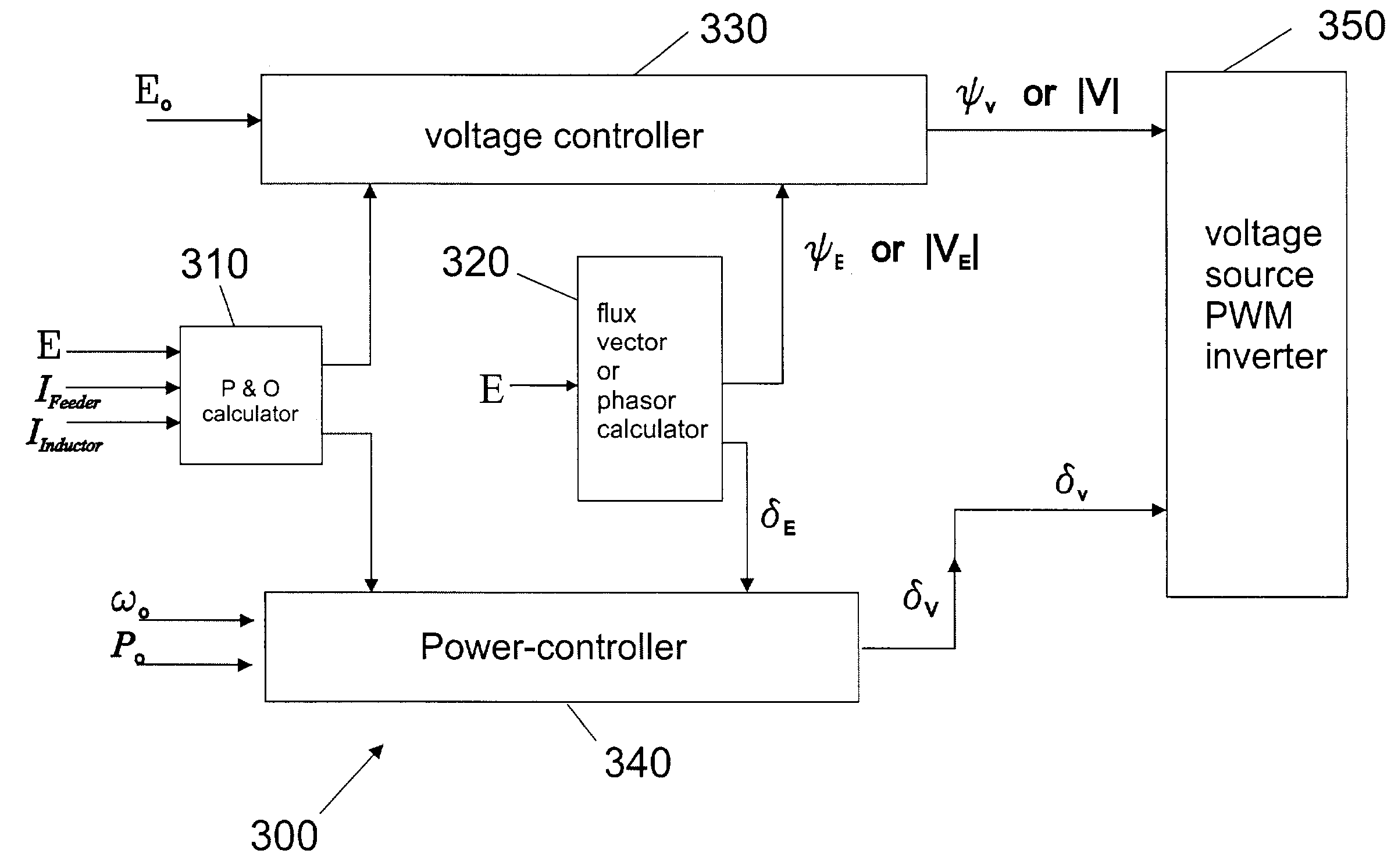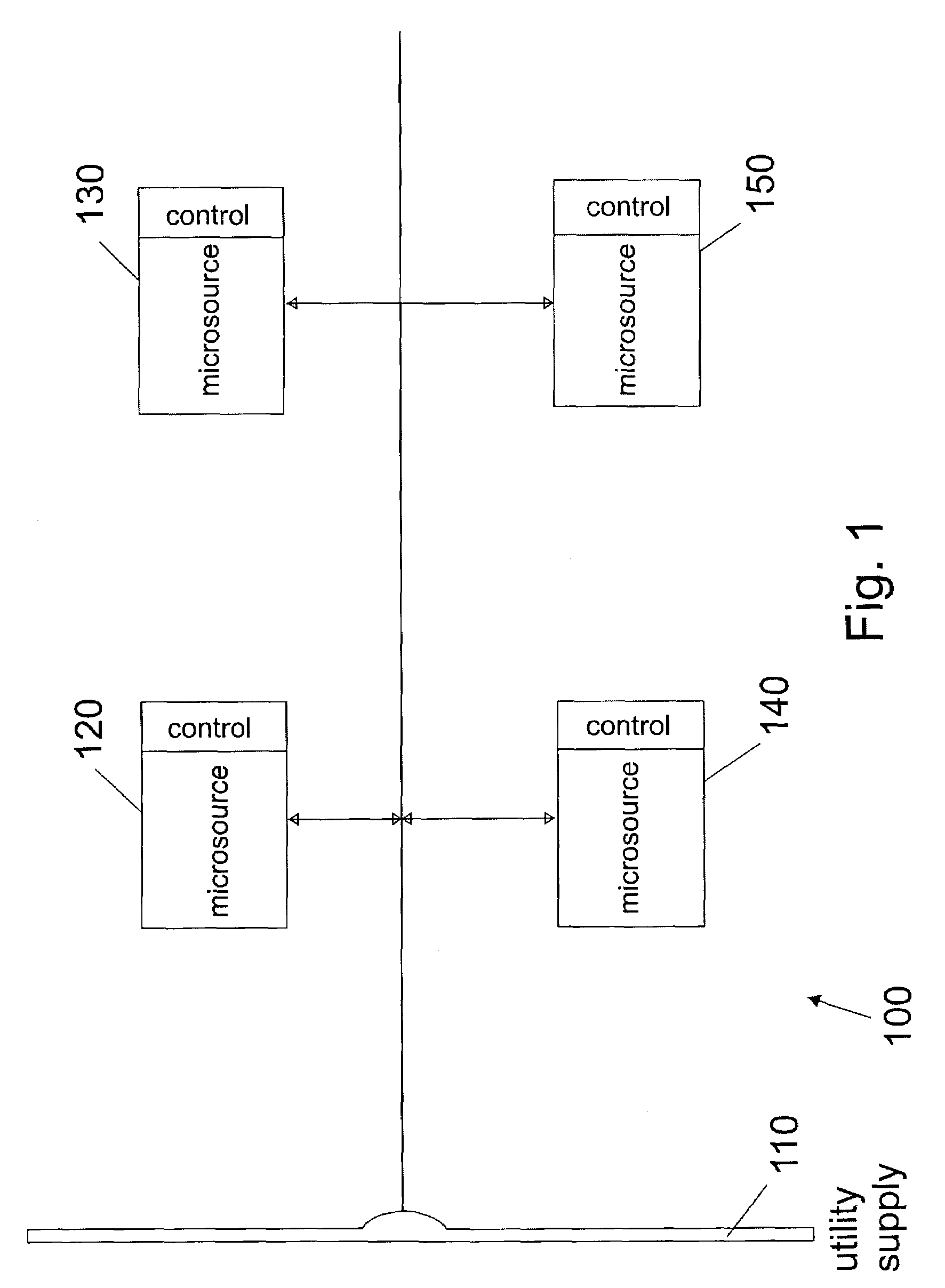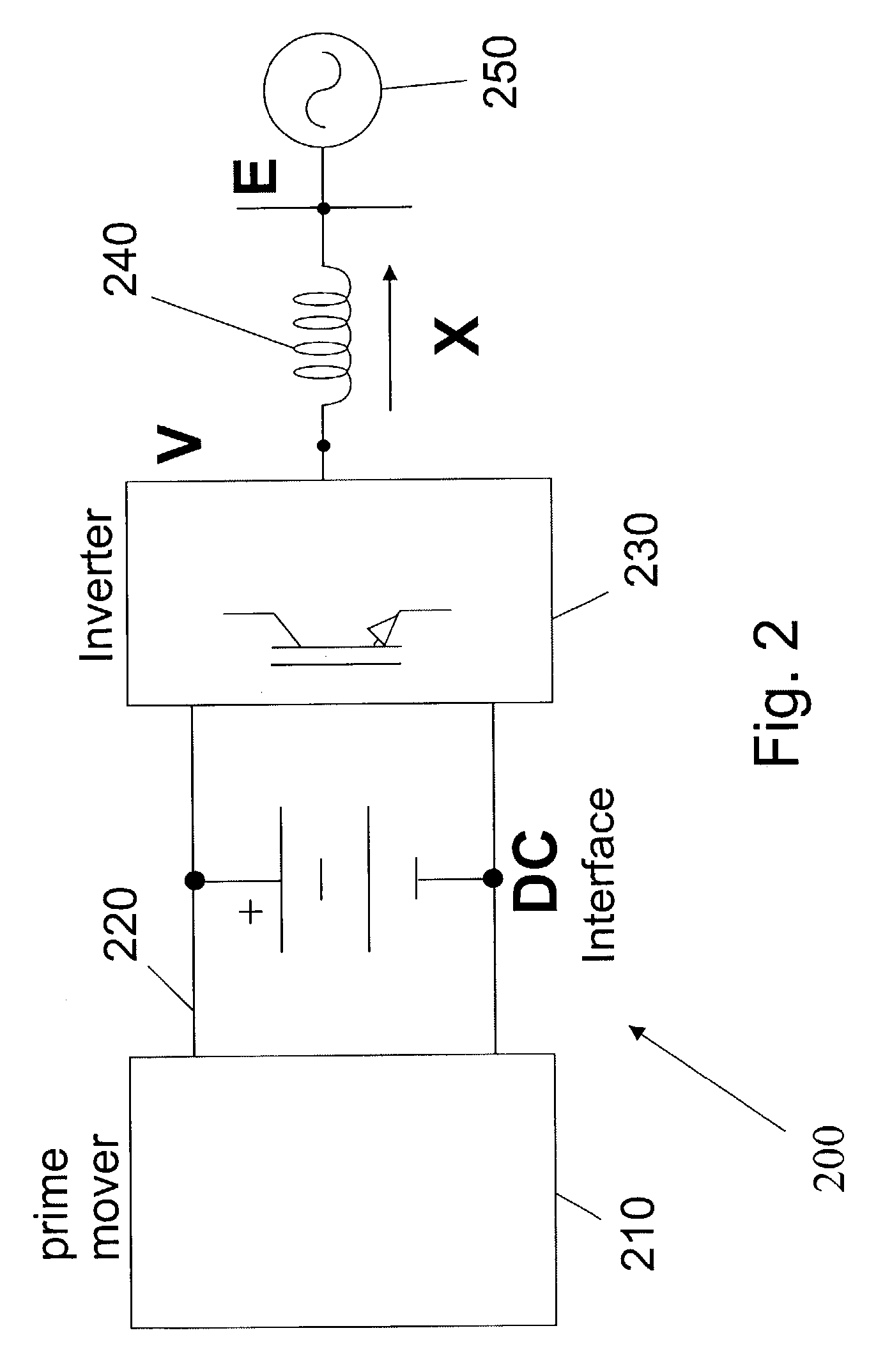Control of small distributed energy resources
- Summary
- Abstract
- Description
- Claims
- Application Information
AI Technical Summary
Benefits of technology
Problems solved by technology
Method used
Image
Examples
Embodiment Construction
[0042]In the following description, for purposes of explanation, numerous specific details are set forth to provide a thorough understanding of exemplary embodiments of the invention. It will be evident, however, to one skilled in the art that the invention may be practiced without these specific details. In other instances, structures and devices are shown in block diagram form to facilitate description of the exemplary embodiments.
[0043]In some embodiments, hardwired circuitry may be used in place of, or in combination with, software instructions to implement the functions described. Thus, the embodiments described herein are not limited to any specific combination of hardware circuitry and software, nor to any particular source for the instructions executed by a computerized control system.
[0044]Exemplary embodiments of a system for and method of control of small distributed energy resources are described below. These exemplary embodiments can include distributed generators contr...
PUM
 Login to View More
Login to View More Abstract
Description
Claims
Application Information
 Login to View More
Login to View More - R&D
- Intellectual Property
- Life Sciences
- Materials
- Tech Scout
- Unparalleled Data Quality
- Higher Quality Content
- 60% Fewer Hallucinations
Browse by: Latest US Patents, China's latest patents, Technical Efficacy Thesaurus, Application Domain, Technology Topic, Popular Technical Reports.
© 2025 PatSnap. All rights reserved.Legal|Privacy policy|Modern Slavery Act Transparency Statement|Sitemap|About US| Contact US: help@patsnap.com



